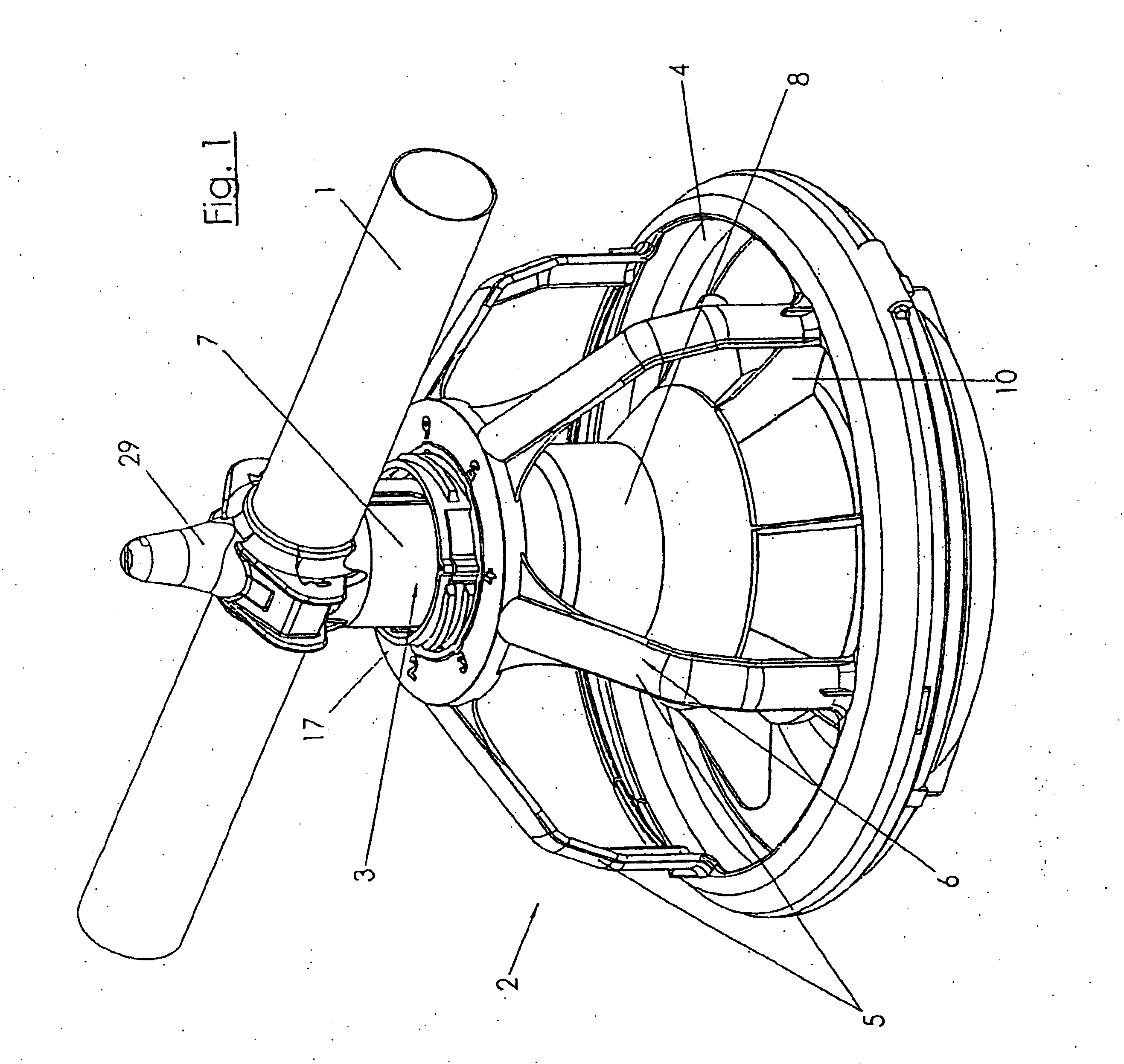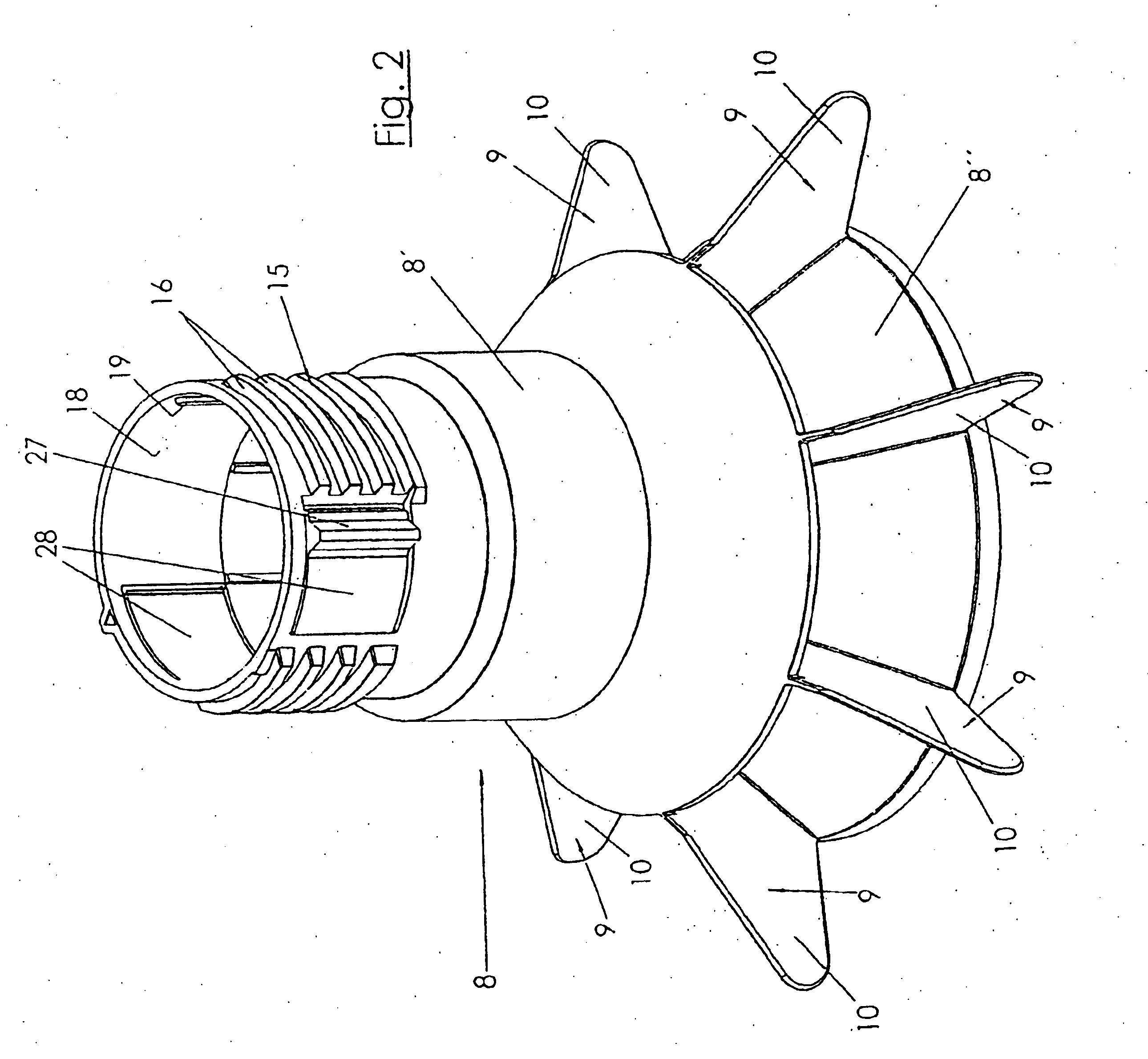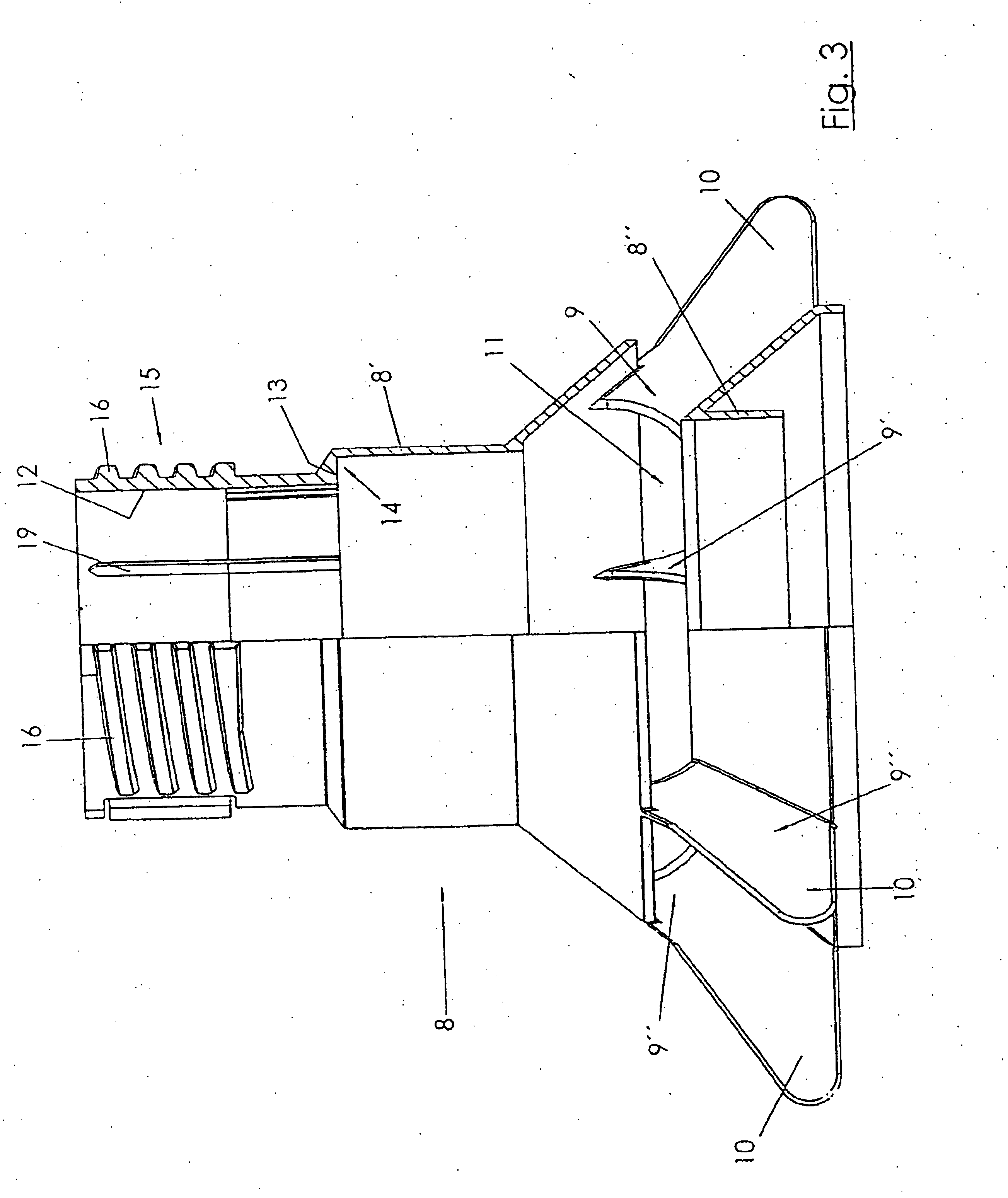Device for feeding poultry in particular fattening poultry, preferably boilers
- Summary
- Abstract
- Description
- Claims
- Application Information
AI Technical Summary
Benefits of technology
Problems solved by technology
Method used
Image
Examples
Embodiment Construction
[0047] The device for feeding free-range poultry for fattening kept in a coop, and broilers in particular, consists of at least one feed delivery pipe 1, held above the floor of the coop in a lowerable manner, which runs along the entire length of the coop and, by means of a delivery worm element located inside it, or a cable or a chain with delivery disks, transports feed capable of scatter distribution to individual bowl devices 2 suspended on the feed delivery pipe 1. The parts described can also be designated in their entirety as the feed line.
[0048] In FIG. 1, only one part of the feed delivery pipe 1 is represented, with a bowl device 2 suspended in the area of a branch aperture in the feed delivery pipe 1. The bowl device 2 comprises a downpipe 3, departing from a branch aperture not further visible here, and a feed bowl 4 located beneath the downpipe 3, with bowl cupolas 6 formed from grid bars 5 running in spoke fashion. In this situation, the downpipe 3 consists of an inn...
PUM
 Login to View More
Login to View More Abstract
Description
Claims
Application Information
 Login to View More
Login to View More - R&D
- Intellectual Property
- Life Sciences
- Materials
- Tech Scout
- Unparalleled Data Quality
- Higher Quality Content
- 60% Fewer Hallucinations
Browse by: Latest US Patents, China's latest patents, Technical Efficacy Thesaurus, Application Domain, Technology Topic, Popular Technical Reports.
© 2025 PatSnap. All rights reserved.Legal|Privacy policy|Modern Slavery Act Transparency Statement|Sitemap|About US| Contact US: help@patsnap.com



